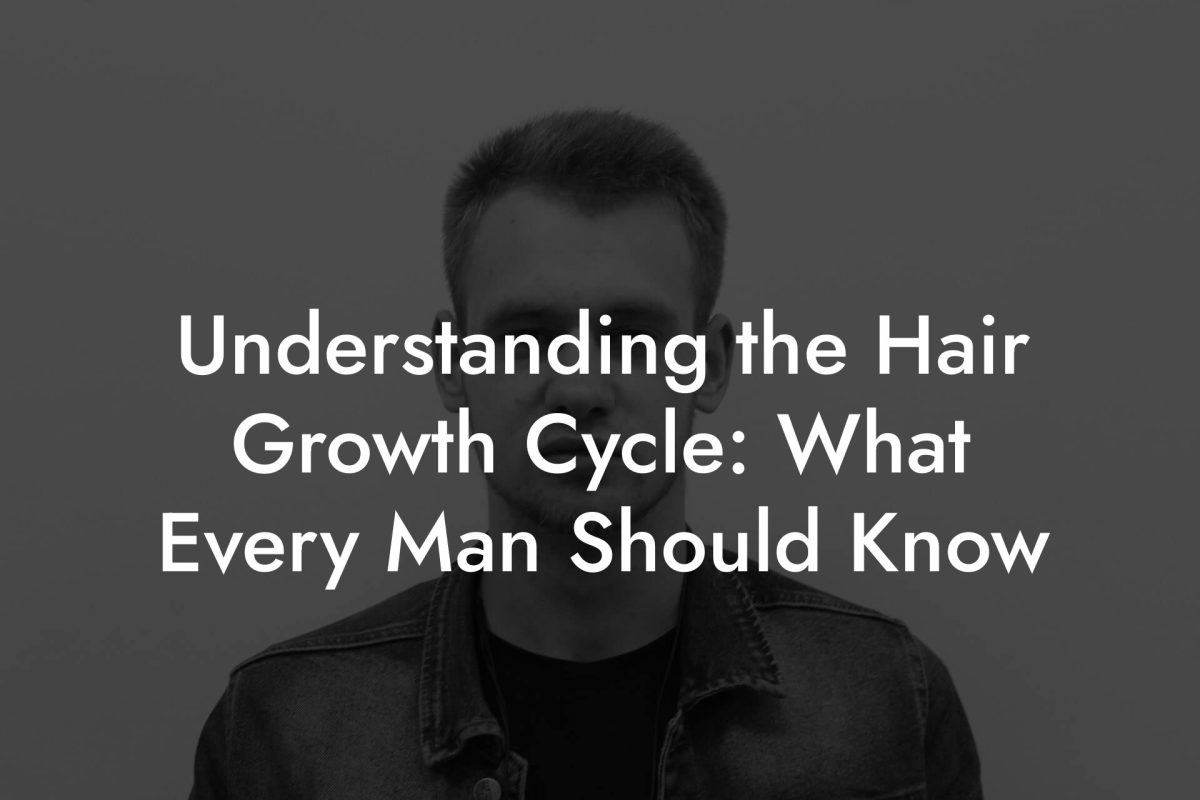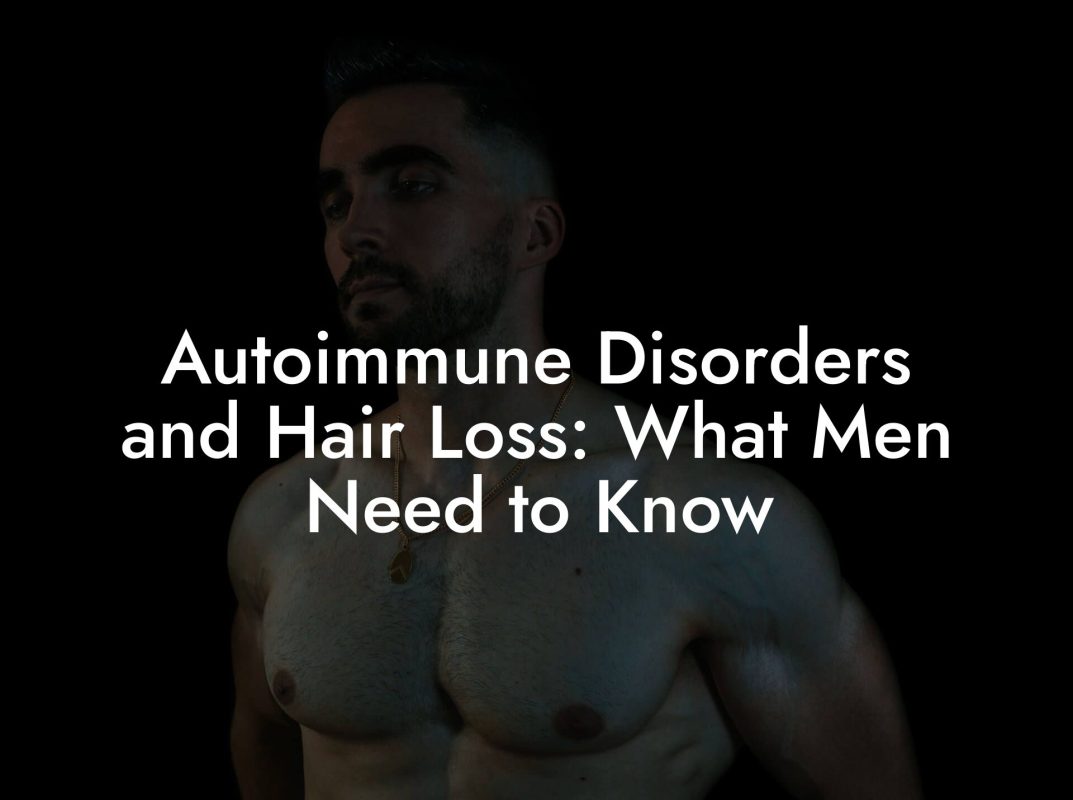Hair Loss Library
The Science Behind Hair Follicle Miniaturization Explained

Ever wondered why your hair sometimes seems to lose its mojo, gradually shifting from a thick, luscious mane to a sparser, less rebellious style? Welcome to the bizarre and fascinating world of hair follicle miniaturization—a scientific process that underlies the hair loss journey for many men, and yes, even you! At Mane Matrix, we’re here to break down the science behind this mysterious phenomenon in a language that doesn’t feel like you’re reading a college textbook. Grab your favorite beverage, kick back, and let’s dive into the intriguing realm of hair biology, where every strand counts and where understanding your follicles might just be the secret to reclaiming your crowning glory.
Understanding Hair Follicle Miniaturization: The Basics Unraveled
Hair follicle miniaturization is basically your hair’s way of downsizing. Imagine your hair follicles as miniature factories: when things are going well, these factories produce thick, robust hair fibers. But due to a complex interplay of genetic, hormonal, and environmental factors, these once mighty factories can shrink over time—producing thinner, shorter, and less pigmented hair. In simple terms, the process involves a gradual transformation of robust, terminal hairs into vellus-like hairs, the feathery actors in the background.
This transformation is primarily fueled by an over-sensitization to dihydrotestosterone (DHT), a hormone largely responsible for hair loss in men. DHT wreaks havoc on the hair follicles by shortening the growth phase (anagen) and lengthening the resting phase (telogen). With each cycle, the follicle produces finer, weaker hair, creating the telltale signs of pattern baldness and thinning hair that many of us dread.
While the scientific explanation might sound like a plot twist in a sci-fi movie, understanding hair follicle miniaturization is pivotal if you’re on a quest for luscious locks. Once you get the lowdown on how your follicles work (or don’t work as well as they used to), you can start exploring actionable steps to slow or even reverse the miniaturization process.
The Root Causes: Why Do Hair Follicles Go Mini?
Before we go full detective mode on hair follicle miniaturization, let’s look at the prime suspects responsible for this hairline heist:
- Genetics: If your dad or grandpa sported a receding hairline, the genes of destiny might be whispering the same fate to you. Genetic predisposition is the number one factor behind hair follicle miniaturization, making it a family affair that transcends generations.
- Hormonal Changes & DHT: Dihydrotestosterone (DHT) is the notorious hormone that plays a central role in miniaturization. It binds to receptors in your hair follicles, triggering them to shrink over time. Think of it as a relentless personal trainer who makes your hair work towards a less impressive physique.
- Environmental Stressors: Pollution, UV exposure, and even stress can add fuel to the miniaturization fire. While these aren’t the primary culprits, they exacerbate the overall environment in which your follicles operate, creating a perfect storm for premature aging of your hair.
- Nutrition & Lifestyle: A diet that’s high in processed foods and low in essential nutrients might be sabotaging your hair from the inside. Hair is made of keratin—a protein that needs proper nutrition to stay strong and vibrant, so what you eat can make a big difference.
- Aging: Let’s be real—time waits for no one. As you age, your hair follicles naturally lose some of their regenerative capabilities, making them more susceptible to the miniaturization process.
While it might seem like these factors are out to get you, the bright side is that understanding them opens up a world of proactive strategies. Knowledge is power, and by deciphering the clues behind hair follicle miniaturization, you’re one step closer to taking control of your hair loss journey.
The Cellular Science: How Hair Follicle Miniaturization Works
Let’s geek out for a moment. At the microscopic level, hair follicle miniaturization involves a dramatic alteration in the hair growth cycle. Normally, your follicles go through a growth phase (anagen), a transitional phase (catagen), and then a resting phase (telogen). In a healthy scalp, these phases are well-regulated, leading to consistent cycles of thick hair production.
However, when DHT enters the picture, the well-oiled machine starts to sputter. DHT shortens the anagen phase—the period during which new hair is generated. Consequently, the hair produced during each cycle is not only shorter but also finer and less pigmented—a phenomenon referred to as miniaturization. Over time, the accumulation of these miniaturized hairs results in the thinning and eventual disappearance of hair in affected areas.
Researchers have pinned down several biological pathways that contribute to this process. For instance, gene expression profiles in miniaturized follicles show upregulated markers of apoptosis (cell death) and downregulated signals for cell proliferation. Simply put, your hair follicles are not only getting smaller—they’re also slowly shutting down operations.
And while the intricate dance of hormones, genes, and cellular signals might sound like something out of a high-tech lab experiment, the implications are very real. By better understanding these cellular mechanics, scientists are developing more effective treatments and targeted therapies to combat hair follicle miniaturization.
Implications for Men’s Hair Loss: What It Means for Your Confidence
For many modern men, hair isn’t just a secondary feature—it’s a statement of style, youth, and confidence. When hair follicles begin their miniaturization journey, the visible sign is pattern hair loss, which tends to start in the temple areas and crown. You might start noticing an increasingly receding hairline or a patchier look on top, and that can sting—not just physically but emotionally, too.
In our age of self-expression and personal branding, every strand plays a part in defining who you are. The aesthetic impact of thinning hair can lead to feelings of self-consciousness and even spark a crisis of identity. But here’s the kicker: understanding the science behind hair follicle miniaturization is also a surge of empowerment. Once you’re in the know, you can make informed choices about treatments, lifestyle changes, and even cosmetic strategies that combat the process head-on.
The silver lining? Hair loss is not a one-way ticket. Advances in research, coupled with innovative treatments—from pharmaceutical solutions like finasteride and minoxidil to cutting-edge therapies like PRP (platelet-rich plasma) injections and low-level laser therapy—offer hope and practical options. So while your hair follicles might be miniaturizing, your options for regrowth and resistance are anything but small.
Tackling the Miniaturization Menace: Modern Treatments and Research
Let’s talk solutions. Armed with advanced technology and a deeper understanding of follicular dynamics, researchers and clinicians are constantly pushing the envelope on hair loss treatments. Here’s a rundown of some of the most exciting approaches:
Pharmaceutical Interventions
Two of the most widely used medications in the fight against hair follicle miniaturization are finasteride and minoxidil. Finasteride works by inhibiting the enzyme responsible for converting testosterone into DHT, thereby lowering DHT levels in the scalp and mitigating its deleterious effects on hair follicles. Minoxidil, on the other hand, is a topical treatment that works by increasing blood flow to the hair follicles, fostering an environment conducive to hair growth.
While these treatments have shown great promise, they’re not one-size-fits-all. Some men experience remarkable hair regrowth, while others see only modest improvements. Side effects vary, and ongoing research seeks to refine these drugs to boost their effectiveness and minimize unwanted results.
Emerging Biotechnologies
The future of hair restoration is brimming with innovative solutions. Scientists are exploring gene therapy, stem cell treatments, and specialized peptides that target the molecular pathways involved in miniaturization. Imagine a future where a simple injection could reverse miniaturization at a cellular level—exciting, isn’t it?
Low-Level Laser Therapy (LLLT) is another cutting-edge treatment gaining traction. Using light wavelengths to stimulate cellular activity in the hair follicles, LLLT aims to kickstart the growth process and reverse miniaturization. It’s a non-invasive treatment that many men find both effective and convenient.
Platelet-Rich Plasma (PRP) Therapy
PRP therapy involves drawing a small amount of your blood, processing it to concentrate the platelets, and then injecting this enriched plasma back into your scalp. The growth factors in PRP are believed to stimulate hair follicles and promote regrowth. Although still considered experimental by some, many men have reported encouraging results with this therapy.
In summary, while hair follicle miniaturization remains a formidable foe, the arsenal of treatments available today is more diverse and effective than ever before. By combining traditional pharmaceuticals with the latest innovations, you’re not just fighting a losing battle—you’re entering a new age of personalized hair care.
DIY Hair Health Hacks: Lifestyle Adjustments That Pack a Punch
Aside from the clinical and high-tech treatments on offer, there’s a whole world of lifestyle tweaks that can help maintain and even enhance your hair’s vitality. Think of it like giving your follicles a spa day every day.
Feast on Follicle-Friendly Foods
Your diet has a powerful influence on hair health. Incorporate foods rich in proteins, vitamins, and minerals to nourish your follicles from the inside out. Leafy greens, nuts, fatty fish (hello, omega-3s), and colorful fruits are all fantastic additions to your daily menu. These nutrient-dense choices help reduce inflammation and support the keratin production essential for robust hair growth.
Stress Less and Sleep More
Stress is the arch-nemesis of healthy hair. Chronic stress can accelerate the miniaturization process by disrupting hormonal balance and wreaking havoc on your scalp’s microenvironment. Incorporating stress-reducing practices—such as mindfulness meditation, regular exercise, or even a digital detox—can work wonders. And never underestimate the power of a good night’s sleep: during deep sleep, your body repairs itself, including your hair follicles.
Scalp Care: More Than Just Shampooing
A healthy scalp is the foundation for vibrant hair. Regular exfoliation, massage, and gentle cleansing can remove buildup and stimulate blood flow. Try a cool rinse after washing to help close the pores and reduce inflammation. There are even specialized scalp treatments with essential oils and antioxidants designed to create the perfect environment for hair regrowth.
These DIY hair health hacks might sound simple, but when combined with proven medical treatments, they transform your daily routine into a comprehensive, follicle-fortifying regimen. It’s like upgrading your operating system—only for your scalp!
Integrative Approaches: Merging Science, Nature, and a Bit of Attitude
You might be thinking, “Isn’t hair loss all about pills and potions?” Not quite—modern hair care is embracing a more holistic approach that combines scientifically proven treatments with natural remedies and proactive lifestyle choices. This integrative perspective is especially appealing to Gen Z and millennials who value self-care, sustainability, and authenticity.
Imagine a world where your hair care routine not only combats miniaturization but also improves your overall well-being. Picture pairing a hair-stimulating serum with a mindfulness exercise or complementing your prescription with a nutrient-dense smoothie. It’s all about balance—balancing cutting-edge research with everyday practices that empower you to feel confident and in control.
Whether you’re all in on medical interventions or prefer a gentler, nature-infused approach, the key is consistency and self-awareness. Listen to your body, experiment with different routines, and embrace the journey of rediscovering what makes your hair uniquely yours.
Real-Life Transformations: Stories of Resilience and Regrowth
Nothing inspires like a good comeback story. Across the globe, countless men are reclaiming their confidence and redefining their look by taking charge of their hair health. Here are a few real-life narratives that highlight how understanding and addressing hair follicle miniaturization has transformed lives:
Case Study 1: From Balding to Bold
Meet Alex, a 32-year-old tech entrepreneur who noticed his once-thick hair turning into wispy strands in his mid-20s. Frustrated but determined, Alex dove headfirst into researching hair follicle miniaturization. With guidance from Mane Matrix experts and a regimen that mixed finasteride, minoxidil, low-level laser treatments, and lifestyle changes, Alex experienced measurable regrowth over the course of a year. Not only did his hair regain volume, but he also rediscovered a newfound sense of confidence that translated into every aspect of his personal and professional life.
Case Study 2: Combining High-Tech with Homegrown Wisdom
Ryan, a 40-year-old graphic designer, took a different approach by melding the latest in hair restoration technology with organic, home-based scalp therapies. He integrated PRP therapy sessions with a nutritious diet rich in omega-3 fatty acids and antioxidants, regular scalp massages, and even tried out a few DIY hair masks made from natural ingredients like aloe vera and coconut oil. Over time, Ryan not only slowed the pace of his hair follicle miniaturization but also improved the overall health and texture of his hair. His journey showcases how embracing a multifaceted strategy can yield impressive, sustainable results.
Case Study 3: The Mind-Body Mane Makeover
Then there’s Marcus, a busy marketing executive who realized that the stress of urban life was not only impacting his mental health but also accelerating his hair loss. After adopting a holistic routine that included stress management techniques, regular exercise, a balanced diet, and targeted hair treatments, Marcus witnessed a turnaround in both his mood and his hair density. His story is proof positive that paying attention to mental well-being is as vital as any topical treatment when it comes to countering hair follicle miniaturization.
These transformative stories highlight that while the science might be intricate, the human journey behind it is relatable, real, and full of hope. Whether you’re at the beginning of your hair loss journey or deep in the trenches, remember: every small win is a step toward a fuller, healthier mane.
Step-by-Step Blueprint: Crafting Your Personalized Action Plan
So, you’re convinced that understanding hair follicle miniaturization is step one. What’s next? The real magic happens when you translate this knowledge into a tailored action plan. Here’s a step-by-step guide to designing a regimen that suits your lifestyle, leverages modern technology, and embraces natural methods—all while keeping things refreshingly real.
Step 1: Get Acquainted With Your Scalp
Start with a thorough self-assessment or consult with an expert to evaluate your current hair density, scalp health, and family history. Understanding your baseline will guide you in choosing the right mix of treatments, whether it’s a prescription medication, lifestyle adjustments, or a combination thereof.
Step 2: Set Realistic, Measurable Goals
Are you aiming to slow down the miniaturization process, boost regrowth, or simply maintain your current hair health? Set clear, achievable goals—such as a target hair density, improved scalp health, or better overall well-being. Write them down, create milestones, and track your progress.
Step 3: Tailor a Multifaceted Routine
Integrate the following elements into your daily routine:
- Medical Treatments: Follow your doctor’s recommendations with pharmaceuticals like finasteride or minoxidil, or explore cutting-edge options like PRP and laser therapy.
- Natural Care: Embrace DIY scalp massages, nutrient-rich diets, and natural supplements that support follicle vitality.
- Mind-Body Practices: Reduce stress with meditation, exercise, and sufficient sleep—remember, a calm mind equals happy follicles.
- Tech Tools: Use apps and tracking devices to monitor your progress, keep a hair diary, and stay motivated.
Step 4: Remain Flexible and Adaptable
Your hair care plan should evolve as you do. Monitor the effectiveness of your routine, make adjustments based on results, and keep in touch with your healthcare provider. Flexibility is key in developing a regimen that works both now and in the future.
Step 5: Celebrate Small Wins
Every extra strand, every improved hair texture, and every boost in confidence is worth celebrating. Track your journey, appreciate your progress, and remember that regaining hair vitality is as much a mental triumph as it is a physical one.
With a robust action plan in place, you’re not just fighting hair follicle miniaturization—you’re embarking on a journey towards reclaiming your personal style and confidence. The key is commitment: stick to your plan, adjust as needed, and never underestimate the power of persistence.
Resources and Community Support: Your Next Steps
Transitioning from reader to action-taker is easier with a strong community and the right resources at your fingertips. At Mane Matrix, our mission is to offer cutting-edge insights and a support network tailored for men dealing with hair loss. Here are some steps to further empower your journey:
- Connect with Experts: Consider booking a virtual consultation to get a personalized analysis of your hair loss. Our team is dedicated to breaking down the science into actionable steps without the hassle of traditional medical appointments.
- Join Online Communities: Engage with fellow men who are navigating similar challenges. Online forums, social media groups, and community platforms provide a space for sharing advice, success stories, and even a few hair care memes along the way.
- Access Cutting-Edge Content: Keep up with our latest articles, podcasts, and webinars focused on the science behind hair follicle miniaturization, evolving treatments, and lifestyle tips. Staying informed is crucial to staying ahead of the trends in hair restoration.
- Explore DIY and Holistic Solutions: From detailed guides on scalp massages to nutritional tips that promote hair growth, our resource library is designed to cater to your holistic hair care needs.
- Track Your Progress: Utilize apps and digital journals to monitor your hair’s transformation. Tracking progress not only keeps you motivated but also provides valuable insights for adjusting your routine.
Every step you take is part of a bigger journey—one that combines scientific innovation with everyday practicalities. By tapping into the wealth of resources available, you empower yourself to take control of your hair health, foster community connections, and ultimately, redefine what it means to rock your personal style.
Frequently Asked Questions about Hair Follicle Miniaturization
We’ve compiled answers to some of the most common questions about hair follicle miniaturization and hair loss to help clarify any lingering doubts you might have.
1. What exactly is hair follicle miniaturization?
Hair follicle miniaturization is the process wherein healthy, thick hair follicles shrink over time, producing finer, shorter hairs. This process is primarily driven by genetic factors and hormonal influences, especially DHT.
2. How does DHT affect hair follicles?
DHT (dihydrotestosterone) binds to receptors in hair follicles, shortening the anagen phase (growth phase) and prolonging the resting phase. As a result, the hair produced is thinner, weaker, and eventually, the follicle may stop producing hair altogether.
3. Can lifestyle changes really impact hair follicle miniaturization?
Absolutely! A nutrient-rich diet, effective stress management, and proper scalp care can all create an environment that supports healthy hair growth and mitigates some of the adverse effects of follicular miniaturization.
4. Are there natural remedies that help reverse miniaturization?
While no miracle cure exists, certain natural remedies—such as herbal supplements, essential oils, and DIY scalp massage techniques—can bolster hair health and support conventional treatments.
5. What are the most promising treatments available today?
Treatments like finasteride and minoxidil remain popular, while emerging therapies such as PRP, low-level laser therapy, and even gene-targeted approaches are showing promising results in clinical studies.
6. How long does it take to see results from these treatments?
Results vary from person to person. It can take several months to notice significant improvements, so consistency and patience are key.
7. Should I treat thinning hair before noticing significant baldness?
Early intervention can often slow down the miniaturization process and prolong the phases of robust hair growth. If you notice early signs, it may be beneficial to start a tailored treatment plan immediately.
Your Journey to Hair Confidence and Empowered Growth
The battle against hair follicle miniaturization might seem like a plot twist in your personal style story, but remember: every strand has a tale, and every follicle has the potential for a comeback. At Mane Matrix, we believe that understanding the intricacies of hair biology is the first step in reclaiming your confidence. Whether you’re embracing advanced treatments, tweaking your lifestyle, or exploring integrative approaches that marry science with everyday care, your journey is uniquely yours.
Step by step, as you incorporate expert advice, innovative therapies, and natural remedies into your routine, you’re not just fighting thinning hair—you’re embracing a lifestyle that celebrates resilience, adaptability, and informed self-care. It’s about knowing that every step, every informed decision, brings you closer to a future where hair loss is just one chapter, not the entire story.
So here’s to turning the tide on hair follicle miniaturization, to understanding the science, and to making empowered choices that reflect the vibrant, dynamic individual you are. Your journey to hair confidence and empowered growth starts here—own it, embrace it, and let your mane tell your tale.
At Mane Matrix, we are in your corner, ready to support you with expert guidance, cutting-edge insights, and a community that understands. Let’s navigate the world of hair care together, transforming challenges into opportunities for growth and self-expression.
If you loved this article... Dive deeper into the world of mens hair loss with our most popular sections. If there is anything you think is missing or anything you would love for us to write about, just give us a shout.
Why Am I Losing Hair? Unpacking the Science Behind Men’s Hair Loss
The Ultimate Guide to Male Pattern Baldness: Causes and Clues
Hormones & Hair: How Testosterone Impacts Hair Loss in Men
Genetics vs. Lifestyle: What’s Really Causing Your Hair Loss?
Stress and Strands: Exploring the Link Between Anxiety and Hair Loss
Decoding Androgenetic Alopecia: What Every Man Needs to Know
How Aging Affects Your Hair: Understanding the Natural Process
The Role of Diet in Hair Health: Nutrients That Prevent Hair Loss
Environmental Factors: How Pollution and Toxins Trigger Hair Loss
Medical Conditions and Hair Loss: What’s Normal and What’s Not?
The Impact of Medications on Men’s Hair: What You Should Ask Your Doctor
Unraveling Scalp Health: Signs Your Scalp Needs Extra Care
Hair Loss Myths Busted: Separating Fact from Fiction
The Role of Inflammation in Hair Loss: New Insights for Men
Sleep and Hair Regrowth: Can a Good Night’s Rest Save Your Hair?
How Smoking and Alcohol Affect Men’s Hair: A Deep Dive
Understanding Diffuse Thinning vs. Pattern Baldness in Men
Innovative Research: The Future of Hair Loss Studies for Men
Spotting Early Signs: How to Identify Hair Loss Before It’s Too Late
Autoimmune Disorders and Hair Loss: What Men Need to Know
The Science Behind Hair Follicle Miniaturization Explained
How Your Lifestyle Choices Impact Your Hair’s Future
Understanding the Hair Growth Cycle: What Every Man Should Know
When to Worry: Recognizing Abnormal Hair Loss Patterns in Men
The Intersection of Genetics and Environment in Male Hair Loss
















